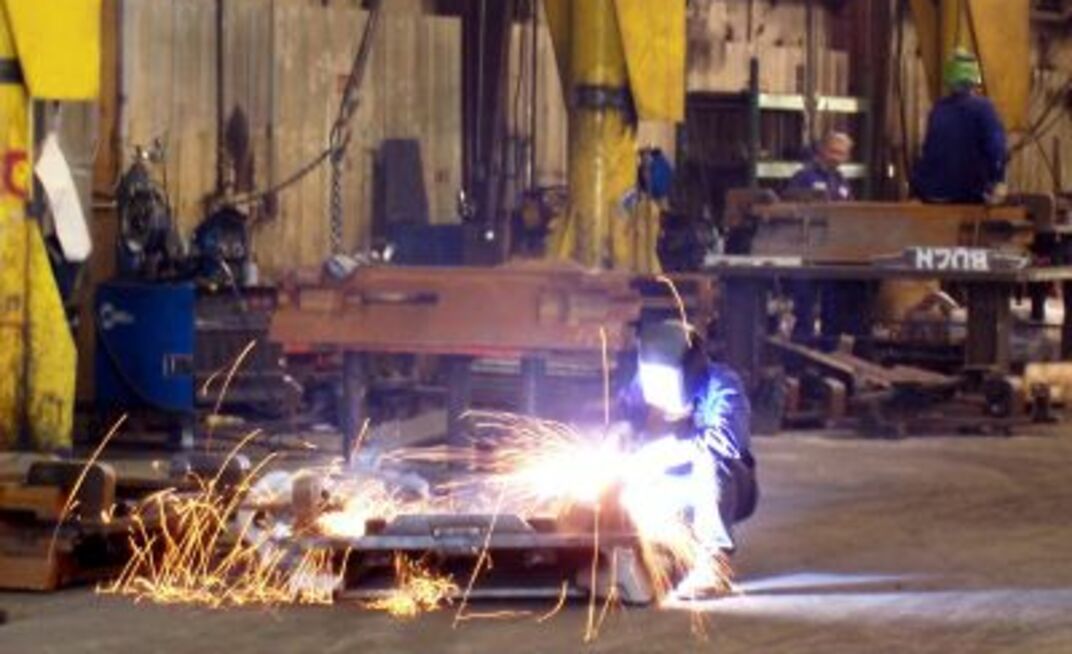Published in the May 2007 American Longwall Magazine
The History
To understand why low seam operations are generating so much interest, one must begin by re-visiting the history of longwall mining in the USA.
Longwall mining was first introduced to the US in the 1950s. The first longwall system installed on US soil was the plow longwall method. This installation was considered to be a trial to test the viability of the German plow method. From the first installation in the 1950s to the 1960s, the newly introduced plow method was initially installed in six mines. According to the Energy Information Administration’s longwall mining report, almost all those first six plow installations failed.
The 1960s brought the introduction of the shearer method of longwall mining. While the shearer was in its infancy stage, the key benefits of using the shearer method over the plow were the shearer’s ability to mine harder coal and larger areas of coal, thereby dramatically increasing productivity. With both methods of longwall mining in their inaugural stage in the US, obvious preference was given to the highest producing method, the shearer.
While the burgeoning longwall community was embracing the shearer method as mainstream high production coal extraction, the plows lost popularity and were subsequently targeted for “thin” seam mining only.
History demonstrates the plow had its advantages, such as mining thin seam “gassy” mine conditions with shallow cuts, which emit less methane. While the plow had advantages, disadvantages were also present. According the EIA, the biggest disadvantage was the plow’s lack of productivity and the equipment’s inability to mine in abrasive/hard coal conditions coupled with its mechanical difficulty when compared to the shearer.
The shearer method dominated the longwall market due to vast production gaps. In the 1980s, 98% of US longwall installations utilized the shearer method. During the next two decades, the disparity remained unchanged with shearers accounting for all but one installation in the US.
During the same time period, mines were developed where large coal reserves existed, with preference given to areas with mid to higher seam coal reserves. As these reserves were and continue to be mined out, low seam operations are becoming increasingly common.
Although longwall mining has come a long way since the 1950s, few changes have been made to integrate the longwall shearer method into low seam coal. According the EIA, from the 1980s to the 1990s little attention was given to low seam mines. The industry’s focus was bigger, better, faster longwall equipment.
Time for change
One of the most significant changes in the last 10 years is the emergence of some of the world’s most productive longwall mining equipment. Since 1996, the number of operating longwall faces has decreased by 18% and now hovers slightly above 50 installations.
Despite the decrease in operating longwalls, longwall production, during the same period, has only fallen 4.5%. This disparity illustrates that equipment has become more productive and efficient.
The leaps in production have some mines breaking production records, including some installations that operate Longwall Associates’ OEM equipment. For example, Consol Energy reported that in 2005, their McElroy mine produced a record 10.4 million tons. This trend also exemplifies the move to larger, more robust conveyor systems, which is a direct result of prevailing mining conditions and geology.
The catalysts for this trend are the coal seams in the west, many with seam heights of 7-8 feet. The seam heights coupled with the organic properties of conditions, namely hard coal, require original equipment manufacturers to develop equipment suited for these mines, which by nature would reflect the environment of the seam, and which is considerably different from the Appalachian region, for example.
Another factor that affects the climate of the longwall industry in the USA is the number of customers operating longwall mines. Key data illustrates that customers have consolidated at a rate of 35% from 1997 to 2007, with several large corporations operating over half of the current longwall installations in the USA. Corporations with surface and other underground mining methods, in addition to longwall installations, such as Arch, Consol, Massey, Murray and Peabody are responsible for producing almost half the USA’s annual total coal production.
Customer consolidation has impacted the longwall environment of recent years quite positively for mine operations, as they have meticulously streamlined their outfits, from an equipment and operations side. On the supplier side, the consolidation has enabled OEMs to further tailor and align their equipment with more focus on interchangeability between a customer’s mines in the OEM and rebuild processes. The final result is a positive impact on customer profitability.
Going low
While one longwall face conveyor equipment trend is larger and “beefier” equipment; in some ways a contradiction as some seam heights are considerably lower than in 1996. Utilizing all recoverable coal reserves is increasingly vital, not only in the USA, but internationally in countries such as China where government mandates require lower seam coal to be extracted before higher seam coal to effectively utilize all recoverable reserves.
“The attraction of high quality coal has always been at a premium and the deep underground reserves where resources have been mined attractively are now being exhausted leaving only lower seams,” Longwall Associates sales manager Ken Dunn said.
“While longwall mining is a highly-skilled process and by no means easier, the ability to remove mid-to-higher reserves presented fewer challenges for mines and in essence was easier to mine than lower seam reserves and there is a necessity to mine these remaining lower seam reserves as economically as possible. Operating costs can be significantly reduced if the volume of out of seam material, such as rock, is minimized. Thus the need to optimize the design of equipment selected to operate in lower seam becomes paramount for OEMs.”
These lower seam heights have challenged OEM longwall manufacturers to develop equipment specifically for low seams while maintaining technological advancements achieved in the longwall industry over the...click here to read on.
























